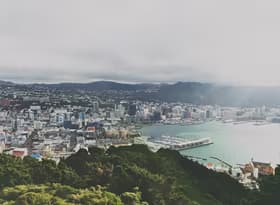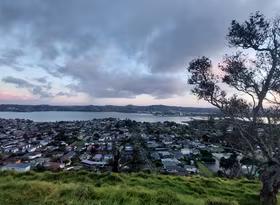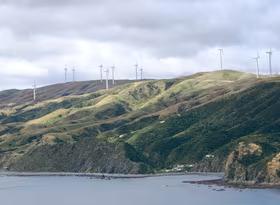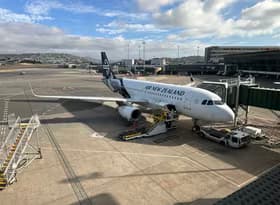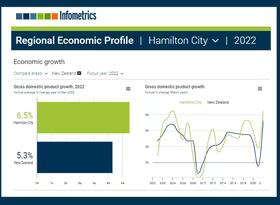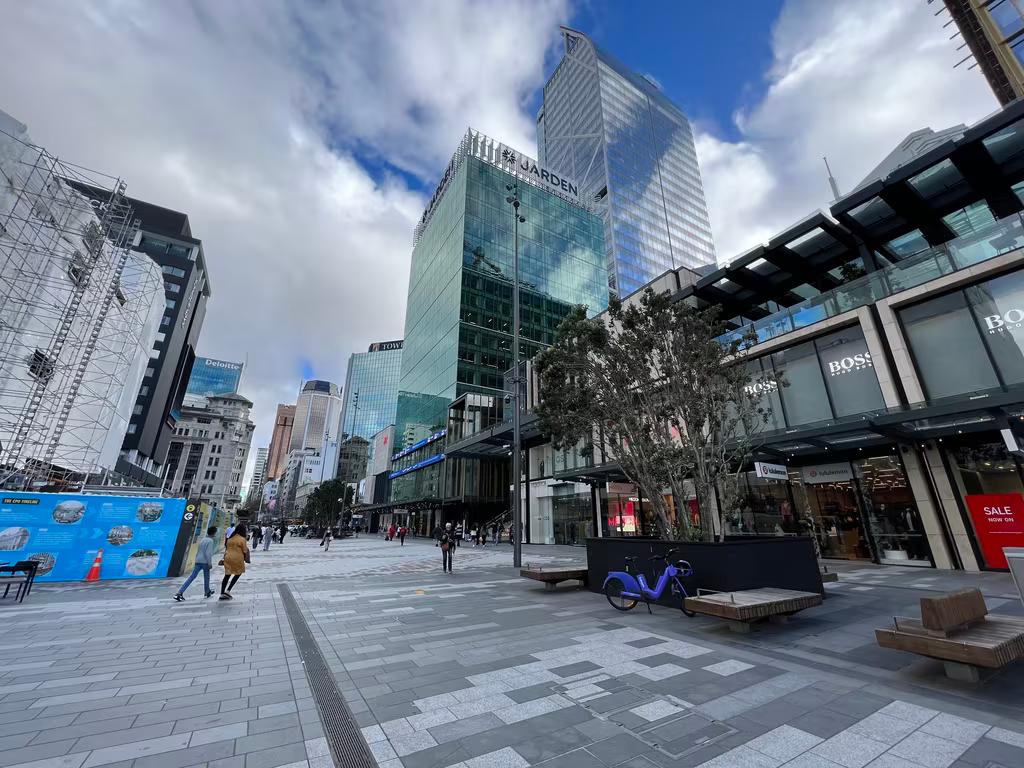
Insights into New Zealand’s Pacific People
Infometrics has recently added a new section to our Regional Economic Profile which explores the Pacific Peoples population and their role in regional labour markets. This article outlines the growing significance of New Zealand’s Pacific Peoples population in the context of broader demographic shifts.
Growing ethnic diversity as the population ages
New Zealand’s population continues to age, with the proportion of the population aged 65 years or older rising from 12% in 2003 to 17% in 2023, and projected to rise to 21% in 2033. However, the age structure of the population differs greatly by ethnicity, so the effects of ageing are felt unevenly.
Our Māori and Pacific populations continue to have relatively high birth rates, which contributes to strong population growth. Our Pacific and Asian populations also have relatively high net migration, which tends to be associated with younger age groups. Conversely, birth rates are lowest amongst Europeans, and the bulk of the baby boomer generation was European too, meaning that Europeans are ageing faster, and growing slower, than other ethnic groups. Between 2023 and 2033, Infometrics and Stats NZ project the European population will grow just 0.6%pa, compared to 1.8% for Māori, 1.9% for Pacific and 3.0% for Asian.
Labour market entrants and exits have different ethnic mix
Because the age structure varies so much between ethnicities, the ethnic mix of labour market entrants and exits also varies. Put simply, this means that when a worker retires, it’s increasingly likely that their replacement will identify with a different ethnicity. This is crucial for employers to grasp, as it should influence how they look to retain and attract employees, who may have different needs and values to previous generations. Hiring a new team member who is “just like the last guy” will become increasingly challenging as the population, and workforce, changes.
As of 2023, 78% of labour market exits (using the 60-69 year old population as a proxy) were European, but only 68% of labour market entrants (using the 15-24 year old population as a proxy) were European. Māori made up 11% of labour market exits, but 25% of entrants. Pacific Peoples made up 5% of labour market exits, but 14% of entrants. Asian people made up 11% of exits and 14% of entrants, a less pronounced gap than Māori or Asian reflecting that the Asian population has an older age structure and greater life expectancy.
Regional distribution varies, more than you might think
In New Zealand, international net migration has tended to go to our largest cities, especially Auckland, and this has contributed to greater ethnic diversity in our largest cities. However, big shifts in the ethnic composition of our population have taken place over the past decade, and will accelerate over the coming decade, as regional and provincial areas face the strongest population ageing and will therefore become increasingly reliant on our ethnically diverse net migration flows.
On a numeric basis, the largest Pacific workforce is unsurprisingly concentrated in Auckland, followed by Christchurch, Wellington and Hamilton Cities. However, looking at the Pacific workforce as a proportion of the overall workforce in Chart 3, we see a greater regional mix – including areas such as South Waikato, Hastings, Rangitikei, Horowhenua, Masterton, and Ashburton.
Big increases in Pacific employment share
Chart 3 shows where we are today, but this has come about from some big increases in Pacific employment share. Between 2000 and 2022, Pacific Peoples share of employment rose from 0.9% to 4.5% in Rangitikei District, and 0.8% to 3.7% in Ashburton District. Areas with an already large Pacific Peoples share rose further, with Auckland rising from 8.0% to 10.8%, and Porirua City from 11.1% to 14.7%.
Pacific People over-represented in low-skilled roles
Currently, the skill mix of Pacific Peoples is different to the population overall, which is reflected in the sorts of occupations held by Pacific People. Pacific People are over-represented in low-skilled occupations, accounting for 53.2% of Pacific employment compared to 34.3% of total employment. Conversely, Pacific People are under-represented in highly-skilled employment, with 22.7% of Pacific People in highly-skilled occupations, compared to 39.0% of all ethnicities. Of note, Pacific Peoples have a similar share of employment in skilled and semi-skilled employment, such as community service and trades roles.
Solid high school achievement, dropping away into tertiary
An obvious explanation for the over-representation of Pacific People in low-skilled roles could be differences in skill levels. However, Pacific Peoples achievement at school is close to the average for all ethnicities. In 2021, 76.2% of Pacific school leavers attained NCEA Level 2 or above, compared to 78.7% for all ethnicities. This starts to fall away when we look at post-school qualifications, with the 2018 Census revealing that 23% of 15-29 year old Pacific Peoples holding a Level 4 or higher qualification, compared to 35% for the overall population. This suggests that there’s work to be done on secondary-tertiary and education-employment transitions.
Pacific People overrepresented in administration, logistics and manufacturing
Our employment estimates show that Pacific People are over-represented in the administration, logistics and manufacturing industries. Pacific People account for 13.8% of all filled jobs in administrative and support services, compared to 6% of all jobs. Administrative services include labour hire and packaging type activities. Pacific People account for 10.4% of jobs in transport, postal and warehousing, and 9.3% of jobs in manufacturing.
Pay gap only party explained by occupation, industry and education
The Human Rights Commission has dived deeper into how biases affect Pacific People’s pay with their Pacific Pay Gap Campaign, finding 61-73% of the Pacific-Pakeha pay gap couldn’t be explained by occupation, industry or education. The Commission suggests that the remainder of the difference can be attributed to discrimination, unconscious bias and other non-observable factors.
An umbrella term for a diverse group
We are proud to be adding new insights around the Pacific Peoples population and their role in the labour market, as this has been a large data gap for clients in the past. In providing detailed and regular data, we have had to work at the high-level grouping of ‘Pacific Peoples’. However, it’s important to note that Pacific People are an incredibly diverse group with a range of different nationalities, cultures and languages. People can identify with multiple ethnicities too, adding a further consideration to your analysis.
When looking at the role of Pacific People in your local area, we would encourage you to be mindful of different nationalities, cultures and languages, perhaps looking at Census data to understand these nuances.
Finding out more
Our new Pacific Peoples insights are included in our Regional Economic Profile Premium package, complementing the ethnic projections in our Population Projections. Please get in touch if you would like to find out more about Pacific Peoples in your area.

